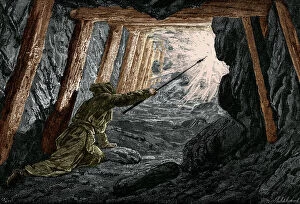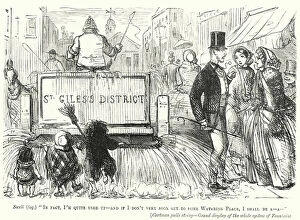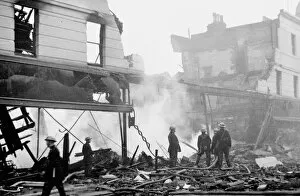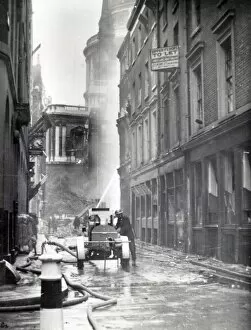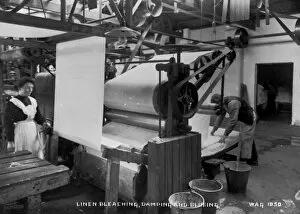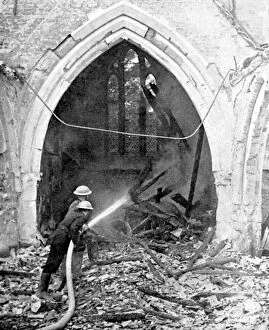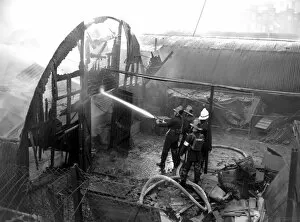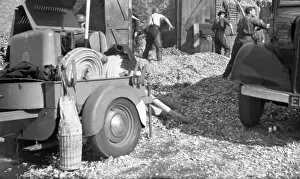Damping Collection
"Damping: A Historical Journey Through Industrial Processes and Disasters" In the 19th century, coal mining was a crucial industry that powered the Victorian period
For sale as Licensed Images
Choose your image, Select your licence and Download the media
"Damping: A Historical Journey Through Industrial Processes and Disasters" In the 19th century, coal mining was a crucial industry that powered the Victorian period. Miners toiled underground, extracting this valuable resource that fueled the nation's progress. However, amidst their laborious efforts, they faced numerous challenges including excessive dust and heat. To combat these issues, a revolutionary invention emerged - the damping machine. This ingenious contraption played a vital role in linen production by dampening fabric before it underwent further processing. As depicted in Punch cartoons of the era, Victorian water carts roamed London streets to supply water for this purpose. The advancements in machinery were not limited to linen manufacture alone; illustrated journalism also benefited from cutting-edge technology during this time. Engravings showcased intricate printing machines used for publications like the Illustrated London News. Beyond industrial settings, figures pulling barrels on trolleys through Tuileries Gardens demonstrated how damping was incorporated into various aspects of daily life. Linen bleaching processes involved both damping and blueing techniques to achieve desired results. However, history took a dark turn with World War II when London experienced devastating air raids known as Blitzes. Oxford Street and Cobbs Corner in Sydenham fell victim to destruction but rose again thanks to resilience and rebuilding efforts captured by photographers documenting these tragic events. Firefighters became heroes during those challenging times as they battled infernos caused by bombings across the cityscape. Their bravery shone through at Mitre Wharf on Scrubs Lane (NW10), where they fought tirelessly against raging flames engulfing buildings. From its humble beginnings in coal mines to its integration into various industries and even wartime struggles, it has left an indelible mark throughout history. Whether aiding linen production or combating disasters like fires or war-induced chaos, this process continues to evolve alongside human ingenuity – reminding us of our ability to adapt and overcome adversity while shaping our world's future.

